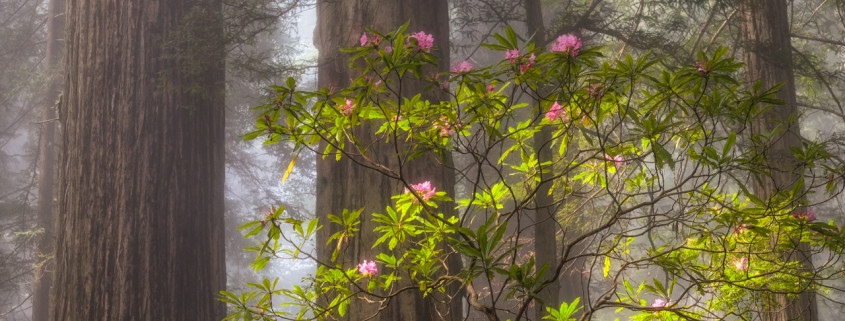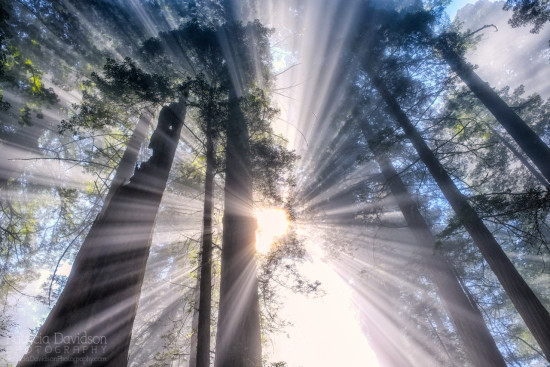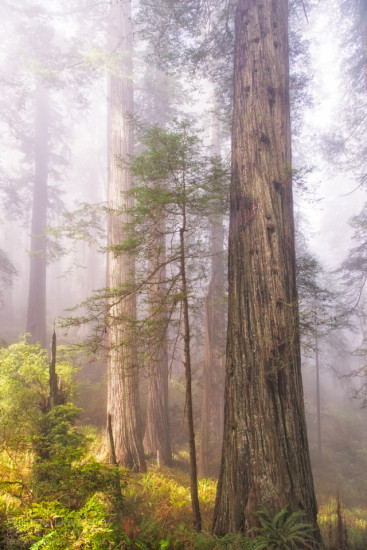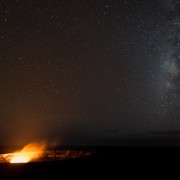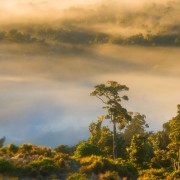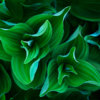Sunlight, Coastal Fog and Trees Equals Pure Magic!
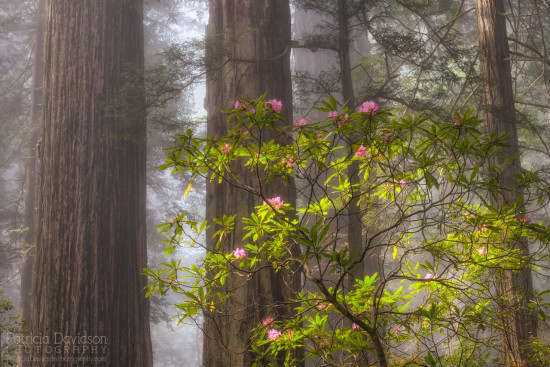
Rhododendron blooms in the morning light and fog in the Del Norte Coast Redwoods State Park, California
This past May I planned a trip to the California Redwoods with my husband to photograph the Rhododendrons and the tall trees. Even though there weren’t as many blooms to be found, I still came back with photos I was happy with because of the conditions we received that created magical light, filtering through the trees on the foggy mornings.
Here are some tips for shooting under these conditions so you can bring back some killer shots.
Morning is best – Get there early enough to watch the light and plan your compositions. Even though morning was best for us, I have seen this type of light in the late afternoon within the Oregon Coast forests or during smokey conditions. During mid-day the sun is usually too high to get the effect you want.
Return often – For three days in a row while we were there the light and fog were just right at the same time everyday. The best light was around 10:00 am during that particular trip. By returning to the areas you want to photograph often, you’ll soon know the exact times for the best possible light.
Backlighting – Position yourself so that the sunlight is behind the trees for the light to filter through. This can make a beautiful image that will have a dreamy or magical effect with the fog and light beams.
Side Lighting – Side lighting can help to make your images pop as well. Leaves and blooms on your images can almost glow with the right mixtures of sunlight and fog. If you are lucky, you can get light beams from the streaming light.
Create a Sunstar – A sunstar can really add some visual interest to your image. If you bounce the sun off a portion of a tree in your composition you can create a nice sunstar. You’ll have to make adjustments to the aperture in your camera. The settings you choose can be different depending on the lens you use. A good quality lens can make a difference on how sharp your sunstar blades look. A smaller aperture is best. If you are new to learning about aperture adjustments, a smaller aperture means a larger f-stop. I try to shoot anywhere from F/ll to F/16 but have certainly used up to F/22 in many of my images over the years. You should know that a higher f-stop might cause softness to some details in your image known as diffraction.
Exposure Balance – When you are shooting directly into the sun you might have some problems with sun flare or weird artifacts. You’ll have to be careful of over-exposure. It might be a good idea to watch your histogram or look for the “blinkies” if that’s your method of checking for over-exposure.
I hope you get the chance to photography these types of conditions, as they are so exciting as a photographer to experience!
For more help with photography tips and techniques check out the following related information from Visual Wilderness:
- eBook: What the Heck is a Histogram

